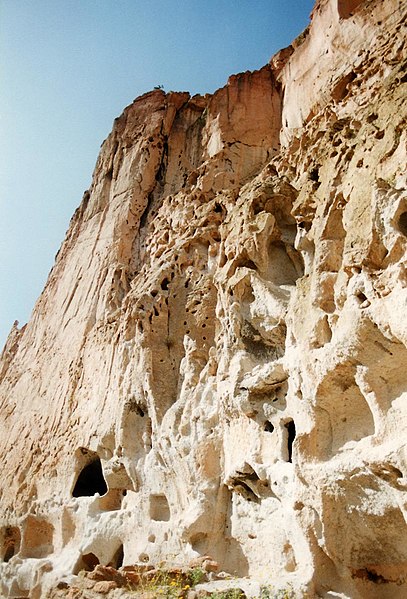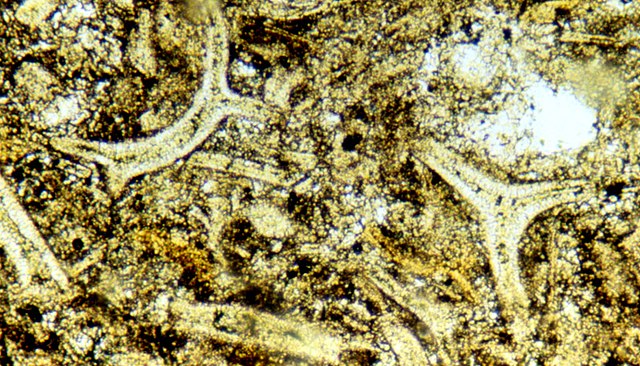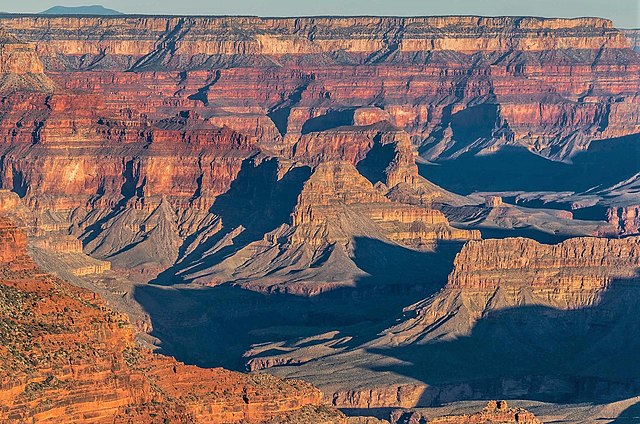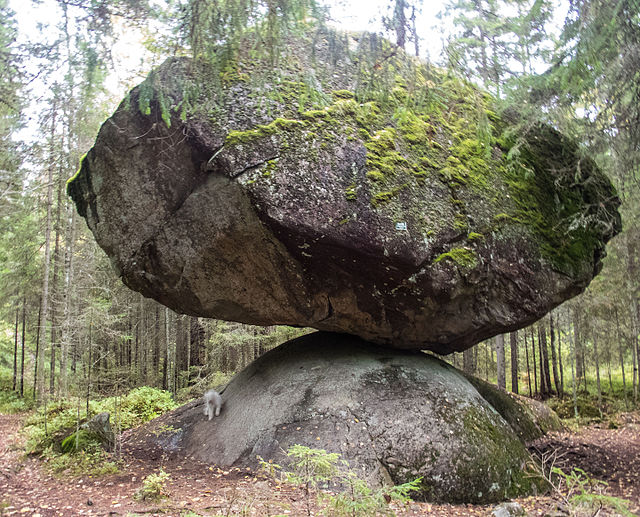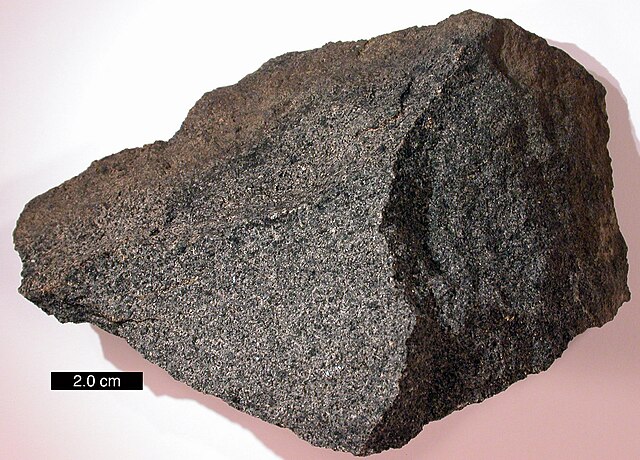Tuff is a type of rock made of volcanic ash ejected from a vent during a volcanic eruption. Following ejection and deposition, the ash is lithified into a solid rock. Rock that contains greater than 75% ash is considered tuff, while rock containing 25% to 75% ash is described as tuffaceous. Tuff composed of sandy volcanic material can be referred to as volcanic sandstone.
Cliff face of welded tuff pockmarked with holes — some natural, some man-made from Bandelier National Monument, New Mexico
Etruscan tuff blocks from a tomb at Banditaccia
A house constructed of tuff blocks in Germany
Light-microscope image of tuff as seen in thin section (long dimension is several mm): The curved shapes of altered glass shards (ash fragments) are well preserved, although the glass is partly altered. The shapes were formed about bubbles of expanding, water-rich gas.
In geology, rock is any naturally occurring solid mass or aggregate of minerals or mineraloid matter. It is categorized by the minerals included, its chemical composition, and the way in which it is formed. Rocks form the Earth's outer solid layer, the crust, and most of its interior, except for the liquid outer core and pockets of magma in the asthenosphere. The study of rocks involves multiple subdisciplines of geology, including petrology and mineralogy. It may be limited to rocks found on Earth, or it may include planetary geology that studies the rocks of other celestial objects.
The Grand Canyon, an incision through layers of sedimentary rocks.
A balancing rock called Kummakivi (literally "strange stone")
Rock outcrop along a mountain creek near Orosí, Costa Rica.
Sample of igneous gabbro

